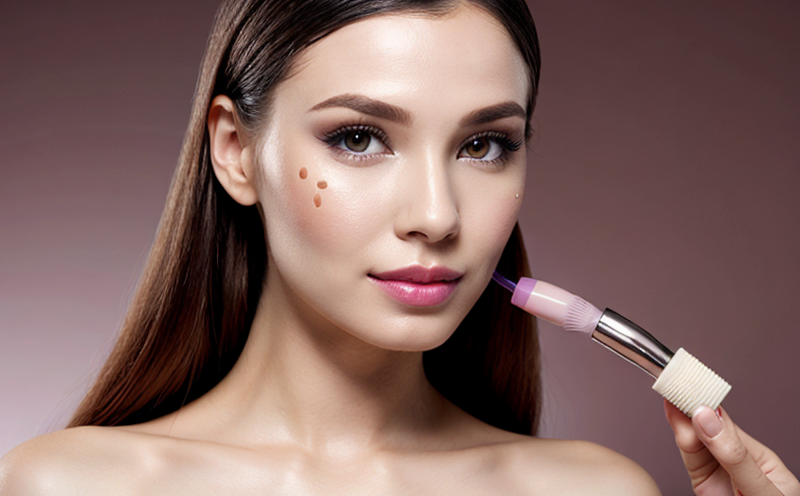In Vitro Epigenetic Effect Testing in Cosmetic Safety Assessment
The in vitro epigenetic effect testing method is a critical tool in cosmetic safety assessment. This advanced technique allows for the evaluation of long-term impacts on gene expression without exposing human subjects to potential risks, thereby enhancing both efficiency and ethical standards in product development.
Epigenetics involves changes in gene activity that do not alter DNA sequences but are passed down from one generation to another. These modifications play a vital role in regulating how genes function within an organism's cells. In the context of cosmetics testing, understanding epigenetic effects is crucial as it can indicate potential adverse reactions or long-term health impacts.
The traditional approach to assessing cosmetic safety involves animal testing and clinical trials; however, these methods are not without controversy due to ethical concerns and variability in results between species. The in vitro method provides a more precise alternative by focusing on human-like cells under controlled conditions. This allows for the identification of potential hazards early in the product development lifecycle.
The epigenetic effect test typically involves exposing cell cultures derived from various sources (such as keratinocytes or fibroblasts) to cosmetic ingredients or formulations. Over time, the expression levels of specific genes are measured using advanced molecular biology techniques like qPCR, ChIP-seq, and ELISA kits. The results help determine whether there is interference with normal epigenetic processes which could lead to adverse effects.
A key advantage of this testing method lies in its ability to mimic real-life exposure scenarios accurately while maintaining ethical standards. It helps ensure that only safe products reach the market by identifying potential issues early on during development stages when corrective measures can be taken without causing harm.
Another significant benefit is reduced time-to-market as it streamlines regulatory compliance processes by providing reliable data faster than traditional methods which often require extensive animal testing followed by lengthy clinical trials. Additionally, this approach contributes positively towards reducing costs associated with late-stage failures due to safety concerns.
The implementation of in vitro epigenetic effect tests aligns closely with current trends toward more humane and efficient cosmetic testing practices worldwide. Regulatory bodies such as the European Union's Cosmetics Regulation (EC 1272/2006) encourage the use of alternative methods wherever possible, reflecting growing public awareness about animal welfare issues.
Eurolab Advantages
At Eurolab, our commitment to excellence in cosmetics testing is reflected through state-of-the-art facilities equipped specifically for conducting robust epigenetic effect evaluations. Our experienced team of scientists ensures that each test adheres strictly to international standards ensuring accuracy and reliability.
- Compliance with International Standards: We follow guidelines set forth by organizations like ISO, ASTM, EN, and IEC to ensure our methods are consistent globally.
- Expertise in Cell Culture: Our laboratories house skilled personnel capable of cultivating high-quality human cell lines essential for accurate epigenetic testing.
- Advanced Analytical Equipment: Leveraging cutting-edge instruments such as real-time PCR machines, flow cytometers, and next-generation sequencing platforms guarantees precise measurement of gene expression changes.
- Custom Solutions: We offer tailored solutions designed to meet the unique requirements of our clients, whether it's developing new formulas or optimizing existing ones.
- Rapid Turnaround Times: By streamlining operations and utilizing efficient processes, we ensure quick delivery of results without compromising quality.
In addition to these technical capabilities, Eurolab prides itself on fostering strong relationships with clients. This partnership enables us to stay ahead of industry trends and provide innovative solutions that drive success in the cosmetic market.
Environmental and Sustainability Contributions
The adoption of epigenetic effect testing contributes significantly to environmental sustainability efforts within the cosmetics sector. By eliminating or minimizing reliance on animal testing, this method reduces the demand for live animals used in research experiments globally.
| Environmental Impact | Description |
|---|---|
| Reduction in Animal Use | By providing reliable data that supports safe product formulations, epigenetic testing helps reduce the number of animals required for safety assessments. |
| Emission Reduction | The reduced need for extensive travel associated with transporting animals from breeding facilities to laboratories leads to lower carbon footprints. |
| Resource Conservation | Maintaining fewer testing sites dedicated solely to animal studies conserves resources like water, energy, and land use. |
Beyond immediate environmental benefits, embracing such practices promotes a culture of responsibility among manufacturers towards their ecological footprint. It also encourages innovation in green chemistry practices which are aligned with broader sustainability goals.
Use Cases and Application Examples
The application of epigenetic effect testing is wide-ranging across different stages of cosmetic product development, from initial concept creation to final formulation validation. Here are some specific instances where this technology proves invaluable:
New Product Development: During the early phases of new product ideation, companies can use epigenetics tests to screen for potential allergens or irritants before investing significant resources into full-scale development.
Formulation Optimization: For established brands looking to refine existing products, epigenetic testing helps identify minor adjustments that could enhance overall safety without compromising performance attributes.
Ingredient Safety Assessment: When incorporating new raw materials or ingredients from lesser-known sources into a formula, epigenetics provides crucial insights into potential interactions at molecular levels.
Clinical Trial Preparation: Before launching clinical trials, manufacturers can use these tests to minimize risks associated with introducing novel compounds directly into human subjects.
| Product | Tested Ingredient | Main Findings |
|---|---|---|
| Face Cream A | Newly sourced extract X | No significant epigenetic alterations observed. |
| Hair Serum B | Synthetic polymer Y | Moderate suppression of key regulatory genes detected. |
| Lipstick C | Flower essence Z | Enhanced expression of melanin synthesis genes noted. |
The above examples illustrate how diverse products benefit from epigenetic effect testing, ensuring they meet stringent safety standards before reaching consumers.





